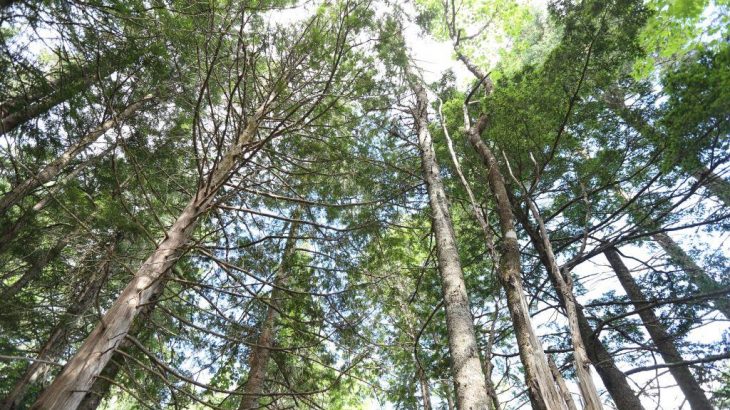By Nature Conservancy of Canada (NCC) Staff
Japanese people are generally familiar with shinrin-yoku or forest bathing – the practice of being immersed in a forest. In Germany, the concept is referred to as Waldsehligkeit, a feeling of profound well-being that comes from being surrounded by trees.
But where does this impact originate, from the tree or trees nearest to the person enjoying the forest? From the undergrowth, the ground cover? From the soil, the forest air? As any forest enthusiast will know, a forest is more than a sum of adjacent parts. It can only be experienced – and even described – as an interconnected entity.
A forest is an intricately linked ecosystem, and Suzanne Simard, professor of forest ecology at the University of British Columbia, goes one step further. She says forests represent an intelligence that is able to behave as though it’s a single organism.
Suzanne Simard discovers interactions in the forest
Growing up in British Columbia, Suzanne first learned about forests from her grandfather, who, as a horse logger, used to selectively cut cedar poles from the rainforest. His way of regarding the forest stood in stark contrast to the forestry she came in contact with during her undergraduate studies.
Suzanne returned to university to study how trees might share information below ground, and conducted experiments deep in the forest. “Twenty-five years ago, I grew 80 replicates of three species: paper birch, Douglas-fir and western red cedar. Then I put plastic bags over the trees and injected the bags with tracer isotope carbon dioxide gases,” she explains.
“The evidence was clear, showing me that paper birch and Douglas-fir were in a lively two-way conversation.”
Suzanne knew she had found something big, something that would change the way we look at how trees interact in forests. Scientists had long discovered a symbiotic association between fungi and the roots of forest plants. Forest fungi interact with root cells, trading carbon for nutrients, and connecting the different individuals – and species – in the forest.
Fungi are the internet of the forest
Suzanne says, “The forest works kind of like the internet.” Underground forest fungi networks have nodes and links, with the biggest hubs around the so-called “mother trees,” which support their young. “In a single forest, a mother tree can be connected to hundreds of other trees,” she says. “Mother trees will send their excess carbon through the forest fungi network to the understory seedlings, and we associate this with increased seedling survival by four times.”
She has also found that mother trees recognize their kin – sending them more carbon and reducing their own network of roots to make space. “When mother trees are injured or dying, they send messages of wisdom to the next generation,“ she explains. “Trees talk.”
“Forests aren’t simply collections of trees; they’re complex systems with hubs and networks that overlap and connect trees and allow them to communicate,” says Suzanne. While this can make forests resilient, it also makes them vulnerable.
“You can take out one or two mother trees, but there comes a tipping point where a massive disturbance can affect hydrological cycles, degrade wildlife habitat and emit greenhouse gases back into the atmosphere, which creates more disturbance and more tree diebacks,” she explains.
Suzanne has four pieces of advice for forest lovers:
- We need to get out in the forest. We need to re-establish local involvement in our own forests, since good forest stewardship requires knowledge of local conditions.
- We need to save our old-growth forests. These are the repositories of genes and mother trees and forest fungi networks.
- When we do cut, we need to save the legacies, the mother trees and networks, and the wood, the genes, so they can pass their wisdom onto the next generation of trees.
- We need to regenerate our forests with a diversity of species and genotypes and structures by planting and allowing natural regeneration. That way, we give Mother Nature the tools she needs to self-heal.
*This post by NCC Staff originally appeared on the Nature Conservancy of Canada blog, Land Lines on February 21, 2017. It is reproduced here with permission.
* Header Image: Eastern white cedars, Mike Dembeck. Used with permission of NCC.




